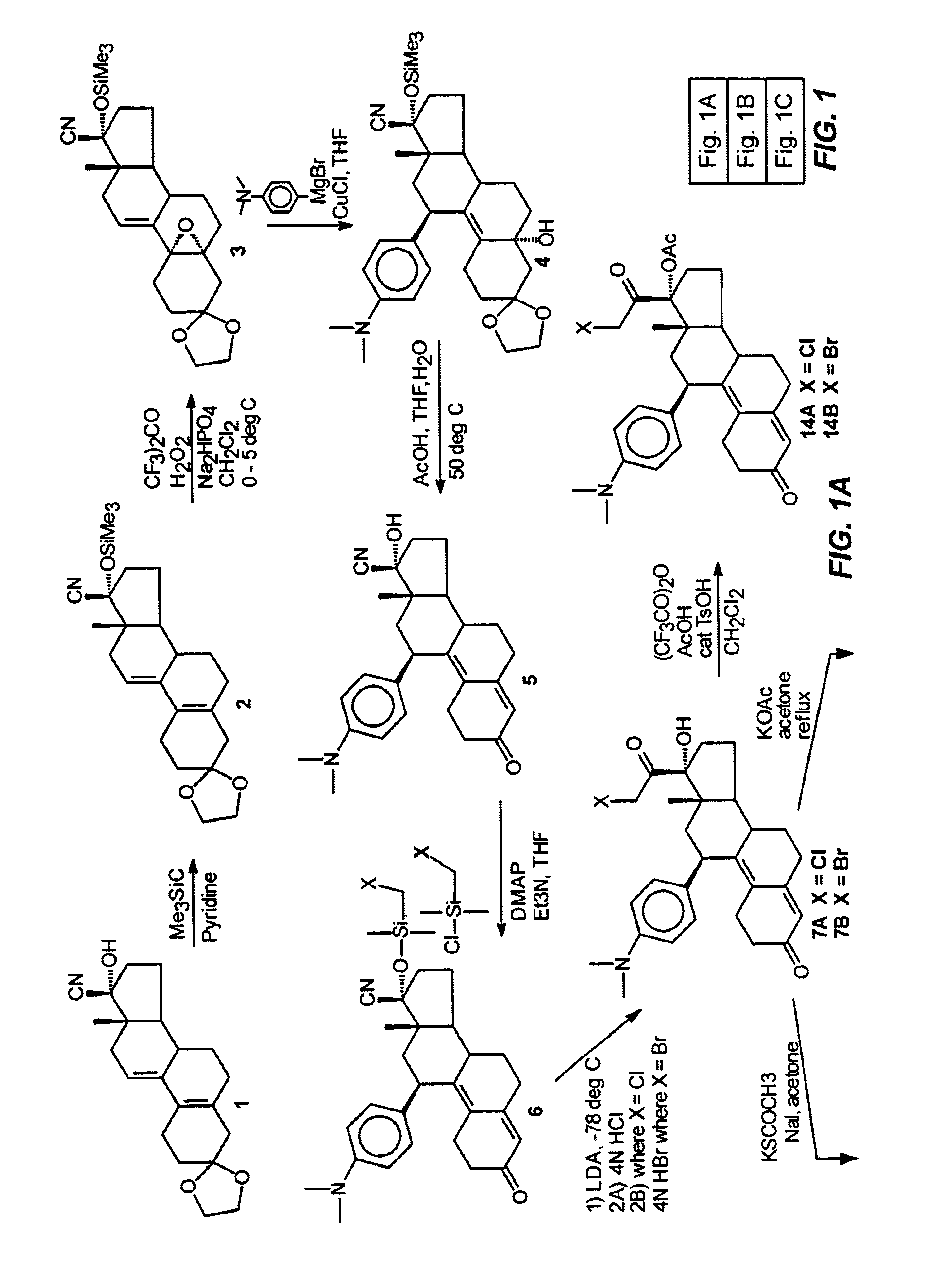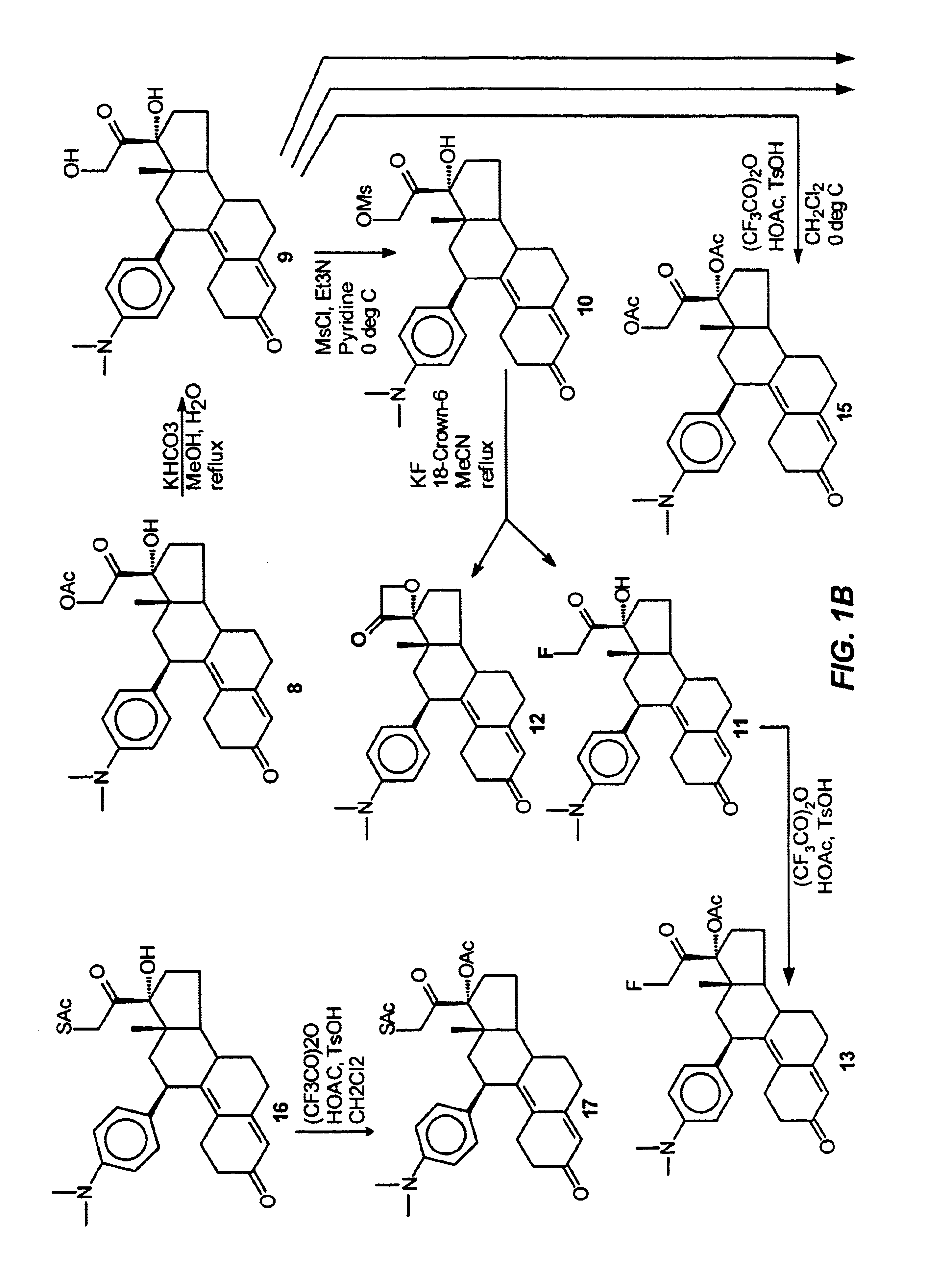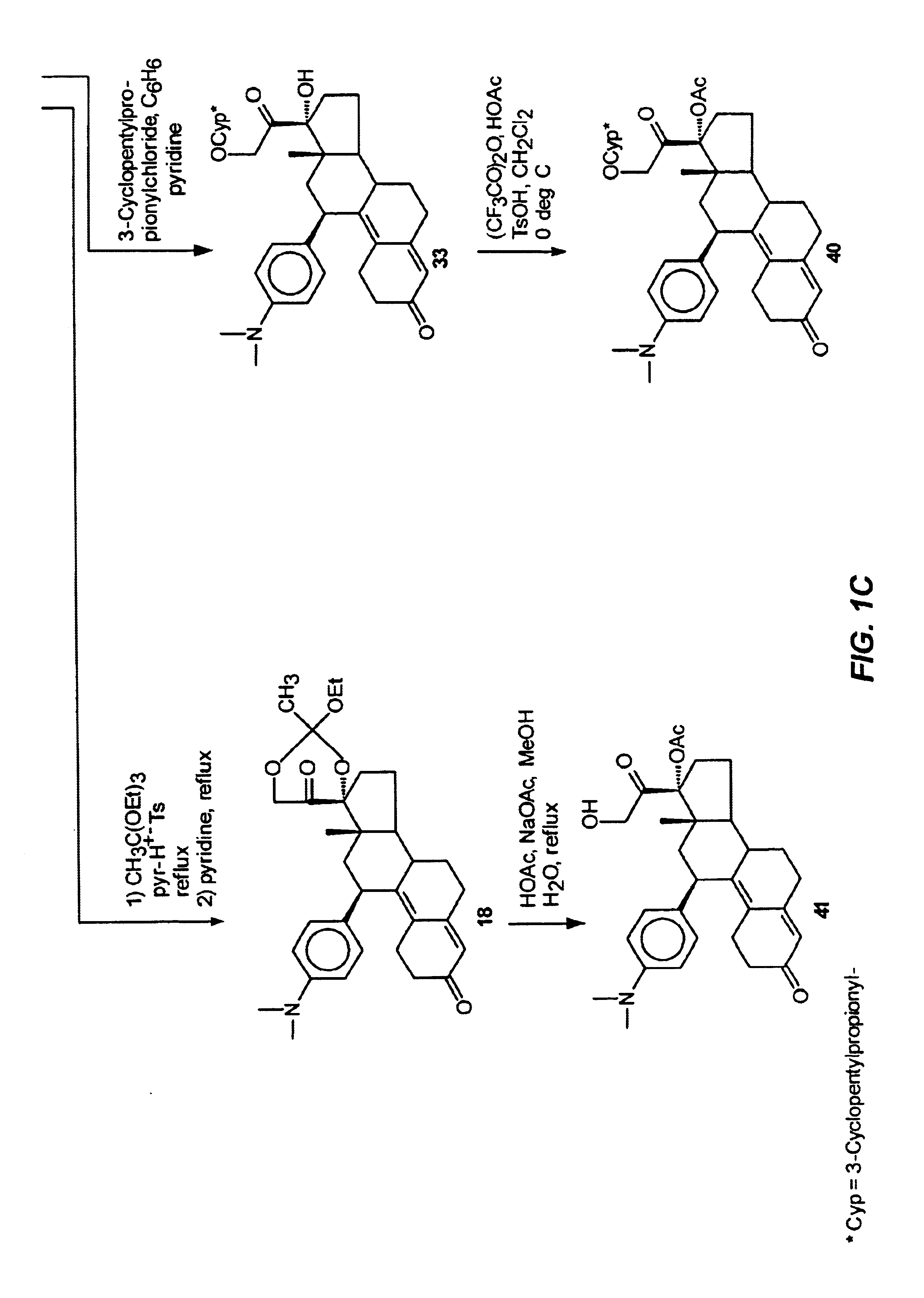21-substituted progesterone derivatives as new antiprogestational agents
a technology of progesterone and derivatives, applied in the field of new 11substituted21substituted19norprogesterone analogs, can solve the problems that the goal of fully achieving the goal of antiglucocorticoid steroids has not yet been achieved, and the task of steroid antigens has proved formidable, so as to inhibit the proliferation of uterine endometrial cells and antigens
- Summary
- Abstract
- Description
- Claims
- Application Information
AI Technical Summary
Benefits of technology
Problems solved by technology
Method used
Image
Examples
examples
A. Preparation of the Compounds of Formula I
example i
This example illustrates the preparation and properties of 17α-acetoxy-21-fluoro-11β-(4-N,N-dimethylaminophenyl)-19-norpregna-4,9-diene-3,20-dione(13) via the Silicon Nucleophilic Annulation Process (SNAP) of 5.
Step 1. 3,3-Ethylenedioxy-17β-cyano-17α-trimethylsilyloxyestra-5(10),9(11)-diene (2):
Under nitrogen, a solution of the cyanohydrin ketal (1, 15 g, 43.9 mmol) in pyridine (85 mL) was treated with chlorotrimethylsilane (28 mL=27.11 g, 221 mmol) and the mixture was stirred at room temperature for 5 hours. The reaction was monitored by Thin Layer Chromatography (TLC) in 2% acetone in CH2Cl2. The reaction mixture was poured into a 50:50 mixture of ice / saturated sodium bicarbonate solution (IL), stirred until the ice was melted, and extracted with hexanes (3×). The organic extracts were washed with water (2×), brine (1×), combined, dried over Na2SO4, and concentrated in vacuo. The remaining pyridine was azeotropically removed in vacuo with heptane to give 18 g of the crude product ...
example ii
This example illustrates the preparation and properties of 17α-acetoxy-21-chloro-11β-(4-N,N-dimethylaminophenyl)-19-norpregna-4,9-diene-3,20-dione (14A).
A solution of trifluoroacetic anhydride (2.2 mL, 15.56 mmol) in CH2Cl2 (25 mL) was treated with acetic acid (0.89 mL, 15.56 mmol). The mixture was stirred at room temperature for 30 min. and p-toluenesulfonic acid (137 mg, 0.72 mmol) was added. The mixture was chilled to 0° C. and a solution of 7A (364 mg, 0.78 mmol) in CH2Cl2 (2.0 mL) was added. The mixture was stirred for 2 hrs. and quenched with cautious addition of saturated NaHCO3 solution. The mixture was extracted with CH2Cl2. The organic extracts were washed with H2O and brine, combined and dried over Na2SO4. Evaporation of the solvent gave 412 mg of a stable foam. The material was chromatographed eluting with 5% acetone in CH2Cl2 to afford 210 mg of 8 in 53% yield as an amorphous foam which persisted recrystallization from a variety of solvents. Analysis by a reverse phase ...
PUM
 Login to View More
Login to View More Abstract
Description
Claims
Application Information
 Login to View More
Login to View More - R&D
- Intellectual Property
- Life Sciences
- Materials
- Tech Scout
- Unparalleled Data Quality
- Higher Quality Content
- 60% Fewer Hallucinations
Browse by: Latest US Patents, China's latest patents, Technical Efficacy Thesaurus, Application Domain, Technology Topic, Popular Technical Reports.
© 2025 PatSnap. All rights reserved.Legal|Privacy policy|Modern Slavery Act Transparency Statement|Sitemap|About US| Contact US: help@patsnap.com



